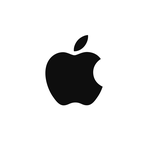Apple’s FineWoven Fiasco and USB-C Stagnation: A Tale of Two Missteps
September 12, 2024, 11:06 pm
Apple has always been a titan in the tech world. Its products are synonymous with innovation and quality. But lately, the company has stumbled. Two recent developments highlight this: the discontinuation of the FineWoven cases and the stagnation of USB-C speeds in the new iPhone 16 lineup. Both stories reveal a troubling trend. Apple seems to be losing its edge.
Let’s start with the FineWoven cases. Launched with much fanfare, these premium accessories were supposed to elevate the iPhone experience. Instead, they became a cautionary tale. Users quickly voiced their dissatisfaction. The cases, made from a high-tech fabric, were touted as durable. But reality told a different story. Stains appeared like unwelcome guests. Coffee spills vanished, but greasy fingerprints lingered. The promise of elegance crumbled under scrutiny.
iFixit, a trusted name in tech repair, conducted a thorough examination. Their findings were damning. The FineWoven material, while sophisticated, failed to live up to its billing. The tightly woven fibers were supposed to resist wear. Yet, scuffs and marks told a different tale. The case was not waterproof, either. Without protection, it was vulnerable to the elements. Apple’s reputation for quality took a hit.
In April, Apple pulled the FineWoven cases from the shelves. The decision came after a wave of complaints. Customers felt betrayed. They expected a premium product, not a glorified dust magnet. Apple has yet to announce a replacement. For now, buyers of the new iPhone 16 have limited options. They can choose between silicone or transparent cases. Neither option carries the allure of FineWoven.
Next, let’s shift gears to the iPhone 16 itself. Apple made headlines by adopting USB-C. The transition from Lightning was a significant move. But the excitement fizzled quickly. The new models still support USB 2 speeds, capped at 480 Mbps. This is the same speed as the old Lightning port. Meanwhile, the Pro models offer USB 3 speeds, reaching up to 10 Gbps. But why the disparity? Why not unify the experience across all models?
The iPhone 16 and 16 Plus are stuck in the slow lane. Apple’s decision to maintain these speeds feels like a missed opportunity. Competitors are racing ahead. Other devices, like the iPad Pro, boast Thunderbolt speeds of up to 40 Gbps. Apple’s flagship phones should lead the charge, not lag behind.
During the launch event, Apple hinted at the capabilities of the new A18 Pro chip. They spoke of speed and performance. Yet, the USB-C port remained unchanged. It’s as if Apple is playing a game of catch-up while the world moves forward. The new models may have physical buttons and a fresh MagSafe charger, but these tweaks feel superficial. The core experience remains stagnant.
Apple’s approach raises questions. Are they prioritizing aesthetics over functionality? The FineWoven case debacle suggests a disconnect between design and user experience. The USB-C situation hints at a reluctance to innovate. Apple has always been a trendsetter. Now, it risks becoming a follower.
Consumers are left in a bind. They want cutting-edge technology, not half-measures. The iPhone 16 lineup, while visually appealing, lacks the substance that once defined Apple. The FineWoven case fiasco is a stark reminder of the importance of quality. Customers expect more than just a pretty exterior. They want durability and reliability.
As Apple navigates these challenges, it must remember its roots. The company built its empire on innovation and excellence. The FineWoven case and USB-C stagnation are not just minor missteps. They signal a potential shift in consumer perception. If Apple doesn’t adapt, it risks losing its loyal fanbase.
In conclusion, Apple stands at a crossroads. The FineWoven case saga and the USB-C speed stagnation are wake-up calls. The company must reassess its priorities. Quality and innovation should reign supreme. Otherwise, it may find itself overshadowed by competitors who are willing to take risks and push boundaries. The tech world is unforgiving. Apple must remember that its legacy is built on more than just sleek designs. It’s about delivering products that enhance the user experience. The time for change is now.
Let’s start with the FineWoven cases. Launched with much fanfare, these premium accessories were supposed to elevate the iPhone experience. Instead, they became a cautionary tale. Users quickly voiced their dissatisfaction. The cases, made from a high-tech fabric, were touted as durable. But reality told a different story. Stains appeared like unwelcome guests. Coffee spills vanished, but greasy fingerprints lingered. The promise of elegance crumbled under scrutiny.
iFixit, a trusted name in tech repair, conducted a thorough examination. Their findings were damning. The FineWoven material, while sophisticated, failed to live up to its billing. The tightly woven fibers were supposed to resist wear. Yet, scuffs and marks told a different tale. The case was not waterproof, either. Without protection, it was vulnerable to the elements. Apple’s reputation for quality took a hit.
In April, Apple pulled the FineWoven cases from the shelves. The decision came after a wave of complaints. Customers felt betrayed. They expected a premium product, not a glorified dust magnet. Apple has yet to announce a replacement. For now, buyers of the new iPhone 16 have limited options. They can choose between silicone or transparent cases. Neither option carries the allure of FineWoven.
Next, let’s shift gears to the iPhone 16 itself. Apple made headlines by adopting USB-C. The transition from Lightning was a significant move. But the excitement fizzled quickly. The new models still support USB 2 speeds, capped at 480 Mbps. This is the same speed as the old Lightning port. Meanwhile, the Pro models offer USB 3 speeds, reaching up to 10 Gbps. But why the disparity? Why not unify the experience across all models?
The iPhone 16 and 16 Plus are stuck in the slow lane. Apple’s decision to maintain these speeds feels like a missed opportunity. Competitors are racing ahead. Other devices, like the iPad Pro, boast Thunderbolt speeds of up to 40 Gbps. Apple’s flagship phones should lead the charge, not lag behind.
During the launch event, Apple hinted at the capabilities of the new A18 Pro chip. They spoke of speed and performance. Yet, the USB-C port remained unchanged. It’s as if Apple is playing a game of catch-up while the world moves forward. The new models may have physical buttons and a fresh MagSafe charger, but these tweaks feel superficial. The core experience remains stagnant.
Apple’s approach raises questions. Are they prioritizing aesthetics over functionality? The FineWoven case debacle suggests a disconnect between design and user experience. The USB-C situation hints at a reluctance to innovate. Apple has always been a trendsetter. Now, it risks becoming a follower.
Consumers are left in a bind. They want cutting-edge technology, not half-measures. The iPhone 16 lineup, while visually appealing, lacks the substance that once defined Apple. The FineWoven case fiasco is a stark reminder of the importance of quality. Customers expect more than just a pretty exterior. They want durability and reliability.
As Apple navigates these challenges, it must remember its roots. The company built its empire on innovation and excellence. The FineWoven case and USB-C stagnation are not just minor missteps. They signal a potential shift in consumer perception. If Apple doesn’t adapt, it risks losing its loyal fanbase.
In conclusion, Apple stands at a crossroads. The FineWoven case saga and the USB-C speed stagnation are wake-up calls. The company must reassess its priorities. Quality and innovation should reign supreme. Otherwise, it may find itself overshadowed by competitors who are willing to take risks and push boundaries. The tech world is unforgiving. Apple must remember that its legacy is built on more than just sleek designs. It’s about delivering products that enhance the user experience. The time for change is now.

